This article originally appeared in the October 2014 issue of The Spectrum Monitor Magazine.
There’s a topic I’d like to put on table. One that, in my radio-centric world, stirs up a fair amount of discussion…and, truth be told, apprehension.
The question, simply put, is this: “Does shortwave radio have a future?”
I’m frequently asked this question on my blog, the SWLing Post. Somehow–although I’m not sure how–I’ve become something of a go-to individual when this topic arises, and find myself facing this question frequently.
In my work, I continue to regard shortwave radio as a relevant and contemporary medium that conveys information to all parts of the globe, regardless of where on earth one is born, and, for the most part, regardless of one’s income or status. I love the technology, the content, the variety, the affordability, the relevance, and (let’s face it) the sheer magic of shortwave radio. I love that the medium can help people, teach people, move and inspire people, all around the world, everyday–even in the midst of famines, disasters, crises, wars.
The shortwaves–which is to say, the high-frequency portion of the radio spectrum–will never disappear, even though international broadcasters may eventually fade into history. I often think of the shortwave spectrum as a global resource that will always be here, even if we humans are not. But on a brighter note, I expect the shortwave spectrum will be used for centuries to come, as we implement various technologies that find ways to make use of the medium.
So, in the broadest sense, yes; I sincerely believe shortwave has a future.
But that’s not really what most people are asking. Most want to know if there is anything out there to listen to–and what, if anything, will continue to be out there. Broadcasters have been using the shortwave medium for a long time to spread their message. And many of us (TSM and SWLing Post readers, for example) are still listening. At least, as long as the broadcasting, itself, continues.
Shortwave broadcasting: clearly on the decline
Just to be clear: when I refer to a shortwave broadcaster here, I refer to the large government-supported international broadcaster, unless I specify differently. (There are also many private, non-profit, and clandestine broadcasters; these I will address separately).
If you’re a dedicated shortwave radio listener, radio news just this year has been enough to squelch anyone’s enthusiasm for the future of the hobby. The Voice of America, with very little warning, dropped many of their shortwave services in the final week of June 2014, and now it appears that the Broadcasting Board of Governors’ (BBG), according to their special committee report, regard shortwave radio as a legacy technology with a dwindling listenership. They cite plummeting listener numbers around the world, despite an acknowledgement that there are still communities throughout the world who rely on shortwave.
Moreover, Radio Australia has also been hit hard with budget cuts via their parent Australian Broadcasting Corporation (ABC). While there is no confirmation of a loss of shortwave services at time of writing, no doubt ABC also plans to reduce RA’s shortwave offerings significantly at some point.
And earlier this year after months of speculation, Voice of Russia suddenly dropped all of their shortwave radio services. I, for one, didn’t see that coming; I wouldn’t have guessed that VOR would drop shortwave completely. VOR, and its predecessor, Radio Moscow, have long been dominant voices on the shortwaves. Now they have fallen silent,* just as tensions between Russia and many other countries heat up.
[FOOTNOTE: *However, Voice of Russia may be relayed on the new shortwave broadcaster, Global 24.]
Radio Exterior de España, a broadcaster I’ve also listened to most of my life, has also just announced their closure (October 15, 2014).
Even the small non-profit clandestine station, Shortwave Radio Africa, sadly lost funding in August 2014, closing shop within the course of a few weeks; this was a particularly unfortunate event, as this station provided an alternative voice to government propaganda.
So, let’s face it–shortwave radio broadcasting is on the decline. It simply is. There is no denying this.
Hitting home
Clearly, there are not as many broadcasters on the air as there were in even the late 1990s, let alone as many as there were in the late 1970s and early 1980s, when as a child I began SWLing, and found the bands crowded with voices clamoring to be heard.
Now I’m finding it difficult to imagine a world without, for example, Radio Australia. I have tuned into RA on 9,580 kHz since I was eight years old; if I have a companion on the shortwaves, it’s surely Radio Australia. But I do have to come to terms with the idea that we may lose RA at some point, too–indeed, it’s most likely.
In the past five years I’ve had to say a painful goodbye to some of my favorite broadcasters: Radio Netherlands Worldwide, Radio Canada International, and Radio Bulgaria; at the same time, the BBC, DW, RFI, and the Voice of America have all decreased broadcasting hours, as well.
I find it sad to hear these stations fall silent, one by one. Perhaps because I’m something of an anachronism–a fellow who still uses shortwave radio as a means to understand the world, who still regards radio as a source of news that is…well…from the source.
Perhaps this is why I feel so compelled to archive shortwave radio broadcasts on the Shortwave Radio Audio Archive, why I especially want to hear the voice of each station preserved. And I hope this archive will also serve as a reminder that wireless information has been crossing the planet for the better part of a century, even faster than the Internet can disseminate it now. Shortwave still has this power.
What about private, independent broadcasters?
So far, I’ve been primarily addressing government broadcasting. But what about private shortwave broadcasters, who often rely on revenue from content providers and advertising? While struggling in some respects in this economy, private broadcasters are still prominent on the shortwave landscape.
I asked Jeff White, president of the private shortwave broadcaster WRMI about the current state of private broadcasting:
“There has been some decline in shortwave broadcasting among private broadcasters (primarily religious broadcasters). HCJB in Ecuador and FEBA in the Seychelles come to mind–also Christian Vision in Chile. But most of the privately-owned broadcasters seem to be in a status quo situation–not any significant decline, and not any significant growth. Of course you also have to consider the government broadcasters who have privatized their transmitter sites to separate companies, like Babcock, Media Broadcast, MGLOB in Madagascar, Sentech, TDF, etc. In that sense, there has been a great growth in private SW broadcasting, although Media Broadcast has closed a site or two and TDF closed their site in French Guiana (but they both are still very strong shortwave relay sites with lots of clients).”
Most private broadcasting sites were constructed with efficiency and profitability in mind, as compared with many government-funded broadcasting sites, which during the Cold War, built robust and even redundant systems to ensure their radio voice being heard across the planet.
As a case in point, Jeff White’s WRMI is the largest private broadcaster in North America, and one of the largest in the world–but it has much less overhead than, for example, the IBB’s Edward R. Murrow Transmission site in Greenville, North Carolina. According to Jeff White, WRMI sits on 660 acres (one square mile), whereas the IBB site encompasses 2,800 acres (4.4 square miles). While WRMI has more transmitters (fourteen, compared to IBB’s eight) the IBB maintains a larger antenna farm and larger transmitter building, with more employees. In short, the Edward R. Murrow Transmission Site was never designed for efficiency and profitability, whereas WRMI (and its predecessor WYFR) was.
But to be clear, I strongly believe the US should maintain and use the Edward R. Murrow Transmission site; this broadcasting site is simply too valuable a diplomatic resource to abandon. Moreover, in the past 40 years this site has undergone many updates and improvements which allows it to be operated 24/7 by a very small (and efficient) crew of dedicated employees. [Check out my virtual tour of the Edward R. Murrow transmission site to see this remarkable international broadcasting site first hand.]
Another difficulty inherent in private shortwave broadcasting is finding a way to fund it. Shortwave radio is difficult to monetize through promotional ads. After all, private stations typically broadcast to a vast audience; it’s hard to advertise a regional retailer or service when your footprint covers up to a third of the entire planet. And shortwave listeners are often “disenfranchised”; they have no means to purchase products. But conversely, the disadvantage is also an advantage–save the Internet, what media is so widespread–?
Private broadcasters, however, still maintain their services by brokering air-time to paying clients, many of whom have a religious affiliation, and by relaying language services for big government broadcasters who simply purchase transmitter time.
But then there are the mavericks, such as WBCQ in Monticello, Maine. This station is all about free speech, and maintains its site on a shoestring budget. The number and variety of shows they broadcast is nothing short of amazing. Looking at WRMI and WBCQ, it’s clear that government broadcasters could learn from these examples.
[Update: Check out the new commercial shortwave radio station, Global 24, broadcasting via WRMI.]
But is shortwave radio even relevant in the Internet age?
If you read the Shortwave Committee Report Fact Sheet the BBG recently published, you might be led to believe that shortwave should be replaced by more recent communications media. The report marks shortwave radio as a legacy technology, and claims that it is sunsetting with lesser relevancy each year. The BBG committee claims that listeners use mobile technologies and computers to access broadcasters around the globe.
There is some truth in this usage argument. If you randomly surveyed 1,000 people living in, for example, Seoul, Beijing, Bangkok, and Singapore, you would likely find very few–perhaps less than 1%–who still listen to shortwave radio. And it’s quite true that people gravitate towards the more accessible medium; in populated parts of the world where people live above the poverty line, you will find the market flooded with smartphones. In such cases, mobile Internet is certainly both financially and technologically accessible.
But although Internet penetration is increasing even in the developing world, it’s vital to note that since the birth of the Internet, invariably, poverty and Internet usage inversely correlate. In evidence, percentages of the global population with Internet access are indicated on this Google map:
Which can be compared with the WorldBank’s interactive poverty map:
Clearly, there is a direct correlation between the two. Hence my charity, Ears To Our World, distributes not smartphones at this point, but radios.
Technological transitions can be difficult to implement. Those who live in the US may remember the recent move from analog terrestrial television to digital television. Once the announcement was made about this transition, consumers had a period of time to either upgrade televisions or buy a subsidized conversion box that helped those televisions receive the new digital signals. Many found this transition, at the very least, awkward.
But now imagine that you live in a developing country on less than one or two US dollars a day, in a village without mains power, and your news source on shortwave has suddenly been removed with only a few days notice. Your alternatives? To listen over the Internet (a service that requires a subscription you can ill afford), or pay-as-you-go access via an Internet café, a half-day’s walk away…Could you save a year’s worth of salary to help pay for an Internet-capable mobile phone that you cannot even charge locally, and then pay a monthly subscription to listen to a broadcast that used to be free over the air? It’s highly doubtful. Suddenly, this “accessible technology” seems much less accessible.
It’s easy to become complacent and assume listeners have access to broadcasting content via the Internet, when decision-makers live in a word where information is not only plentiful and ubiquitous, but even bombards us to the point that we simply tune it out.
But there are other advantages of shortwave radio over Internet–especially in parts of the world where governments tightly control their country’s media:
- Shortwave radio cannot be easily monitored by a government. In North Korea, for example, this is why shortwave radio remains a vital lifeline of information about the outside world. Censorship of shortwave radio is comparatively unsuccessful, while the Internet is often subject to total blocking.
- Shortwave radio is the ultimate free speech medium, as it has no regard for national borders, nor for whom is in power (or not in power) at any moment.
- Shortwave radio is inexpensive to the listener, because:
- Radios are affordable and plentiful;
- No apps are required, and
- No subscription fees are needed.
- Information races over shortwaves at the speed of light. No buffering is needed, and there is no speed difference between one area to another.
- Shortwave radio works everywhere on the planet. You don’t have to be within a local broadcast footprint or that of a satellite to receive broadcasts. Even in the most impoverished parts of the world, you’ll find shortwave radios and batteries that run them. Their “market penetration” surpasses even that of the smart phone.
- Shortwave radio is a basic, simple technology, requiring little to no learning curve for use.
Moreover, only this year we’ve found that shortwave radio may be an excellent means of disaster communications over vast areas, encompassing oceans and continents. Check out this report from the CDAD network.
In addition, Dr. Kim Andrew Elliott of Voice of America has been successfully broadcasting digital messages over a shortwave AM carrier for well over a year, in the form of the VOA Radiogram he produces. These data modes are so efficient, that they can break through even the most robust jamming techniques used by the Chinese government to censor broadcasts.
So, can we stop the decline shortwave radio broadcasting?
Large-scale, government-supported shortwave radio broadcasting experiences an inherent conundrum: those who fund broadcasting do not directly benefit from it. Customers pay for private broadcaster airtime, but taxpayers typically support government broadcasting.
Without the catalyst and fuel of a World War or Cold War, government-supported international broadcasting becomes invisible to those who fund it. Politicians find it easy to cut, as few constituents understand the significance of broadcasting outside their own countries. And why should they? When one lives in a first-world country with an abundance of news sources, it’s hard to relate to those who don’t.
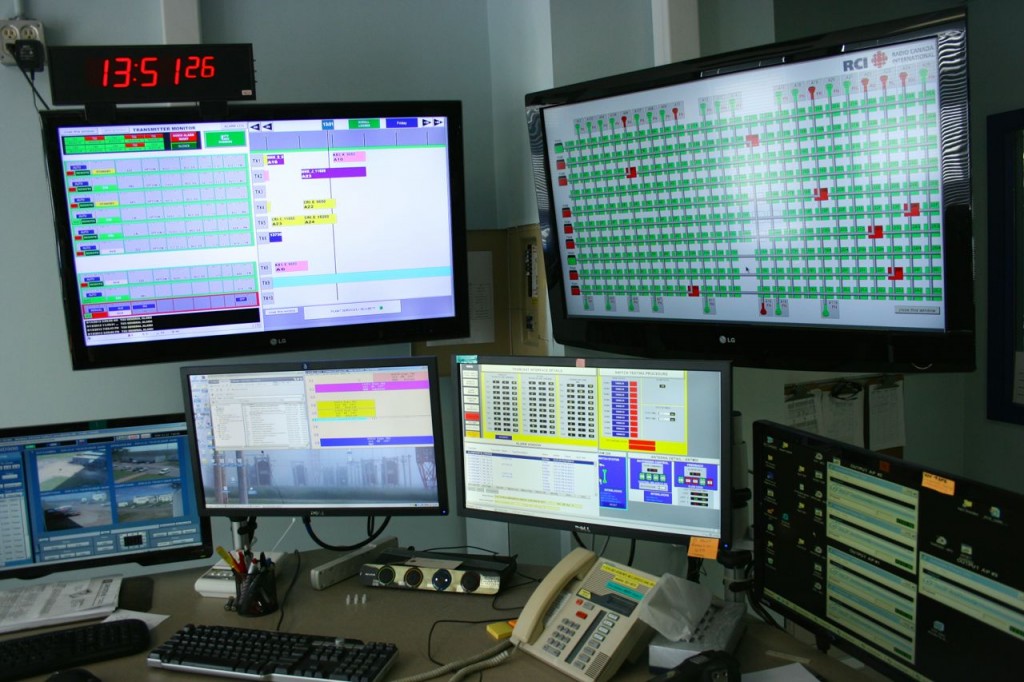
The Canadian taxpayer spent millions of dollars to upgrade the RCI Sackville site so that it could be remotely operated; requiring only a skeleton crew on site. Sackville was closed the same year (2012) these upgrades were brought online.
I experienced this disconnect firsthand while petitioning on behalf of Radio Canada International’s Sackville, New Brunswick transmission site in 2012, in an attempt to prevent the significant site’s closure and dismantlement. Though I spoke with a number of Canadians and even members of Canadian Parliament, more often than not, I found most were not aware of Radio Canada International’s mission nor of shortwave’s relevance. Many had never heard of Radio Canada International. Even members of the public broadcasting advocacy group, Friends of the CBC, had no idea the Canadian government broadcasts to the world via shortwave radio…and that the world was listening–even relying upon–this service.
But Canada is not unique in this respect. Similar views are common here in the US, in much of Europe, and in Asia, and no doubt this lack of awareness is impacting Radio Australia at this very moment.
I’d like to think that if taxpayers knew about the real benefits of shortwave radio broadcasting to those in need, about the vital and even life-saving information broadcasters provide to vast reaches of the developing world, they would support it.
Advice to the listener
If you would like to advocate for the continuation of shortwave broadcasting, contact your local government representative and explain the benefits I’ve outlined. Use social media to spread the word. While I acknowledge that it’s something of a Don Quixote endeavor, it’s nonetheless worth making funders aware that first-world countries may one day regret the loss of this powerful form of outreach and diplomacy.
Advice to broadcasters
Considering that Big Brother can’t easily monitor shortwave radio listeners, and that shortwave radio is usually accessible to even the world’s most impoverished listeners, broadcasters can honorably defend their services to their funders. Moreover, they can use this criteria to help determine when–and where–their broadcasts are vitally needed.
If funders are feeling the pinch, broadcasters may buy time–or even a future–with the services of private broadcasters. The free market economy (and good old-fashioned sponsorship) can keep stations afloat.
But regardless, broadcasters should not dismantle their transmission sites as Canada is currently doing. Not only is the current service originating from these sites a more reliable form of emergency communications than the Internet, should a national disaster befall us; not only do they continue to provide a broad-spectrum mode of diplomacy; but should future digital communication modes find a way to take advantage of the HF spectrum as is now under discussion, this would be most unfortunate.
Imagine a wi-fi signal with a footprint as large as several countries, digital devices with tiny fractal antennas that receive this signal containing rich media (e.g., audio and video)–these are not science fiction, but highly plausible uses of these transmission sites, even within the next decade. [Update: One organization is now using shortwave to distribute their smart phone app and KNL Networks is developing shortwave-powered global Internet access.]
Government broadcasting: a quick way of finding your target audience
So, where does shortwave reach? Take a look at NASA’s composite map of the world at night:
This map offers a quick view of the parts of our planet still quite literally in the dark; what’s more, it makes energy poverty shockingly apparent. Now compare this nighttime world map with the Population Reference Bureau’s most current map:
Upon comparing the two, you will be able to form a vivid picture of populated areas where most people either have no access to power, or simply can’t afford it. East Africa, west Africa, and central Africa are frankly represented. Less noticeable (at least on the NASA map) are impoverished island countries, especially in the Pacific and Caribbean; Haiti, for example, is among these.
So, let’s consider: if basic lighting is too costly for people living in the vast areas these maps indicate, what about paying for–and charging–a smartphone? Obviously, these people still rely upon other means of receiving information, which at this point is radio–primarily FM and shortwave.
Another litmus test for the greater world’s readiness to transition from shortwave radio to phone/Internet technology is as follows. Note which countries lack press freedoms, and free speech, care of the Reporters Without Border’s Press Freedom Index and Map:
This map indicates countries where those in power tightly control news and information, where the Internet is censored, and where shortwave is the only effective means of hearing the outside world. Again, you might notice the prevalence of many east African, west African, and central African countries.
We already know that shortwave radios are in common usage in these countries. But can broadcasters easily and accurately determine listener numbers in these vast, often war-torn areas? Will listeners openly admit to a survey team that they tune in to broadcasts condemned by their respective governments? Not likely. So actual listener numbers remain undetermined, although population alone provides the most useful indicator.
These listeners, kind readers, are the truly disenfranchised of our world. Still, today.
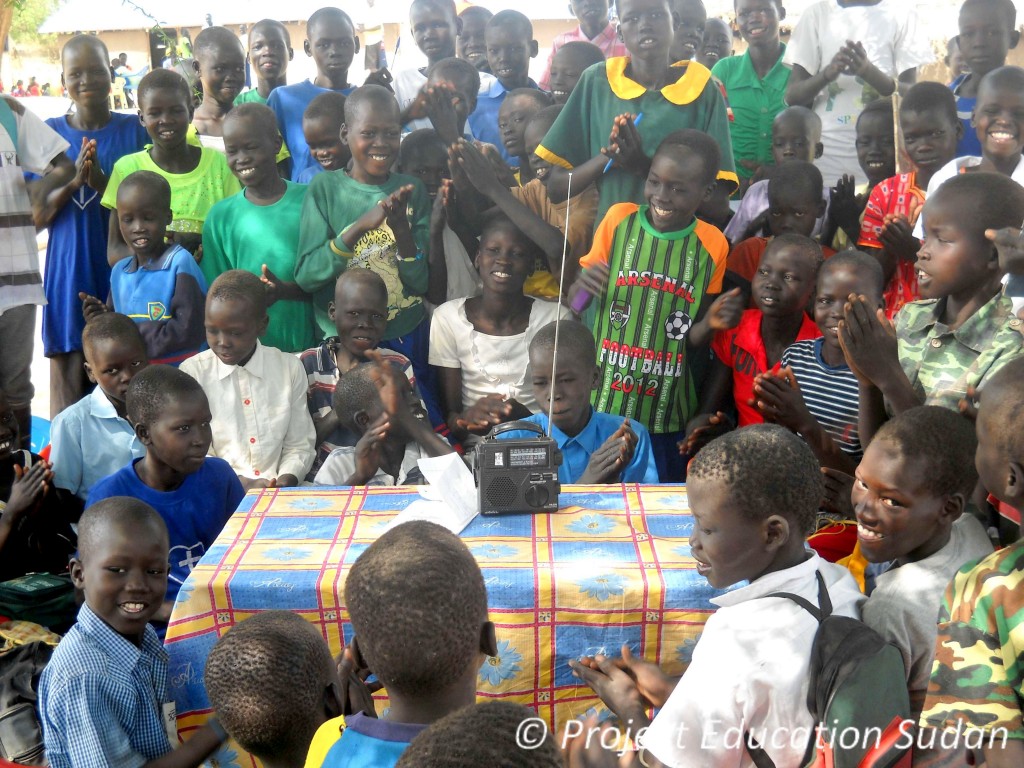
Students in South Sudan listen to their favorite shortwave radio program, VOA Learning English, with a self-powered radio supplied by Ears To Our World.
If we pull the plug on these listeners by removing shortwave radio as an information source, where will they turn? To the Internet?
Let’s assume for a moment that you’re an international broadcaster who has decided to move your content to the Internet. You campaign for and attempt to promote this transition to your listeners, some of whom are living in impoverished areas and/or under repressive regimes (these frequently go hand-in-hand). Do you really think these people can: 1) Afford an Internet service and Internet capable device? 2) Surf anonymously with no chance of their government knowing about the content they research? 3) Ensure that their Internet sources aren’t filtered by their government? 4) Feel confident that their Internet source won’t be turned off at a moment’s notice–?
And none of these points is a stretch. China is the world’s most populous country; it teems with humanity–19% of all of us on this planet live in China. China has excellent Internet penetration…as well as a government that tightly controls and filters this content. I’ve even experienced this firsthand, upon posting an article about China’s Firedrake jamming service which attempts (with only moderate success) to limit shortwave radio in China; within 12 hours, my website received a denial-of-service attack originating in, of course, China. It crippled our website for 24 hours. We had to filter the IP addresses causing the attack, which effectively made it difficult for readers in China to view our site. (China, is regarded as the sixth worst country in terms of press freedoms, according to the Press Freedoms Index). Shortwave can sidestep jamming much more effectively than the Internet can ever hope to overcome such vicious service attacks.
Meanwhile, in Africa…During the last election cycle in Zimbabwe, as some readers may be aware, Robert Mugabe ordered the confiscation of shortwave radios throughout the country. He clearly feared outside news sources like the Voice of America, BBC World Service, and the now-defunct SW Radio Africa. If there was no audience for this information, would Mugabe have gone to such lengths? According to the World Bank, only about 17% of the population of Zimbabwe has access to the Internet (and if you expect this 17% is uniform according to income, you’d be mistaken). The disenfranchised in Zimbabwe, by and large, do not have free and open access to the Internet.
A (modest) positive spin on the decline of shortwave broadcasting
Writing this article has been a cathartic experience for me. In this article, I’ve focused more on the negative implications of shortwave radio’s decline, especially within the humanitarian context. The decline of shortwave radio is a fact I don’t like to face, yet it’s in front of me every day as a humanitarian and as a listener.
But somehow, I’m still an optimist. While others are loudly complaining there’s nothing to listen to on the bands, I’ll be quietly listening to those stations that they don’t realize still exist.
Even as I wrote this column, I was listening to Alcaravan Radio in the wee hours of the morning. Mambo music emanated from Alcaravan’s low-power (1,000 watt) Columbian station. It amazes me that this relatively weak signal punches through the ether during the night and fills my headphones with music. This little signal, and many others like it, play on in the pale glow of shortwave’s apparent “sundowning,” and somehow, this decline is mocked by the cheerful sound.
There are numerous small stations out there like Alcaravan Radio, more than most uninitiated listeners would ever believe. To be clear, though, I would not be able to hear Alcaravan Radio so well if it wasn’t for the fact that I have a good receiver hooked up to a decent wire antenna, and I live in a rural, RFI-free area. I can understand that those living in urban areas with a lot of local noise may get frustrated with the lack of stations to be heard from a portable radio, just as urban light pollution makes it nearly impossible for amateur astronomers to experience the kind of star-gazing their rural friends enjoy. With low RFI, the world opens up on the shortwave bands.
The truth is, I actually do more SWLing now than I did back when the bands were crowded. Why? The challenge has become less about hearing an elusive station through adjacent signal interference, and more about finding those DX stations buried in the static–or waiting for a propagation opening to snag something truly special. With less stations on the air, there is less interference to obscure weaker stations.
As my buddy Dave Richards (AA7EE) recently wrote:
“[T]he silver lining to the cloud is that the new shortwave landscape encourages solely English-speaking listeners to listen outside their immediate comfort zones by listening to broadcasts in other languages. [T]he absence of some of the previously bigger signals makes it a little easier to spot the weak rarities.”
I also enjoy listening to the thriving free radio (aka, pirate radio) scene. Unlike big government broadcasting, this micro-broadcasting is ever changing, growing, and becoming more innovative. (Check out the pirate radio listening primer published earlier this year.)
Yes, variety is still there. For proof, check out some of the recent recordings posted on the Shortwave Radio Audio Archive. In the past year, I’ve personally recorded hundreds of international broadcasters, pirate radio stations, utility stations, and even numbers stations; this doesn’t even include the many more I’ve logged. And, yes–I’ve thoroughly enjoyed it.
Long Live Shortwave
If you feel so compelled, be an advocate for shortwave radio; it’s something you can do for those who don’t have a voice in this matter. Contact your local representative, and ask him/her to maintain vital transmission sites and world broadcasts. Your voice can make a difference here–and across the planet, too.
And in the meanwhile, regarding the much-talked-of coming demise of shortwave, don’t be discouraged by the naysayers and doomsdayers. Join me in contributing to the Shortwave Archive and the SWLing Post. After all, there’s still much to be heard on the shortwaves. How? Simply by listening.



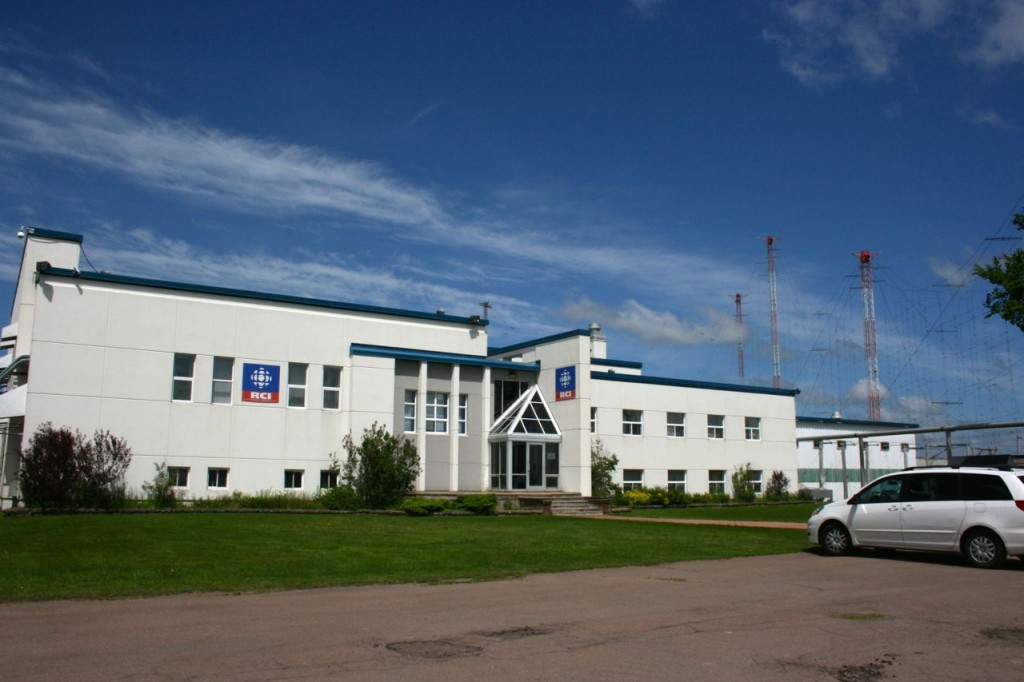
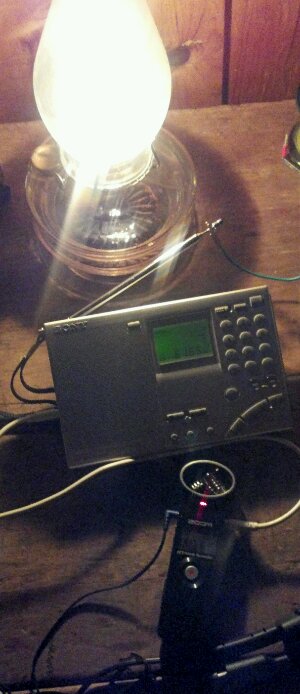
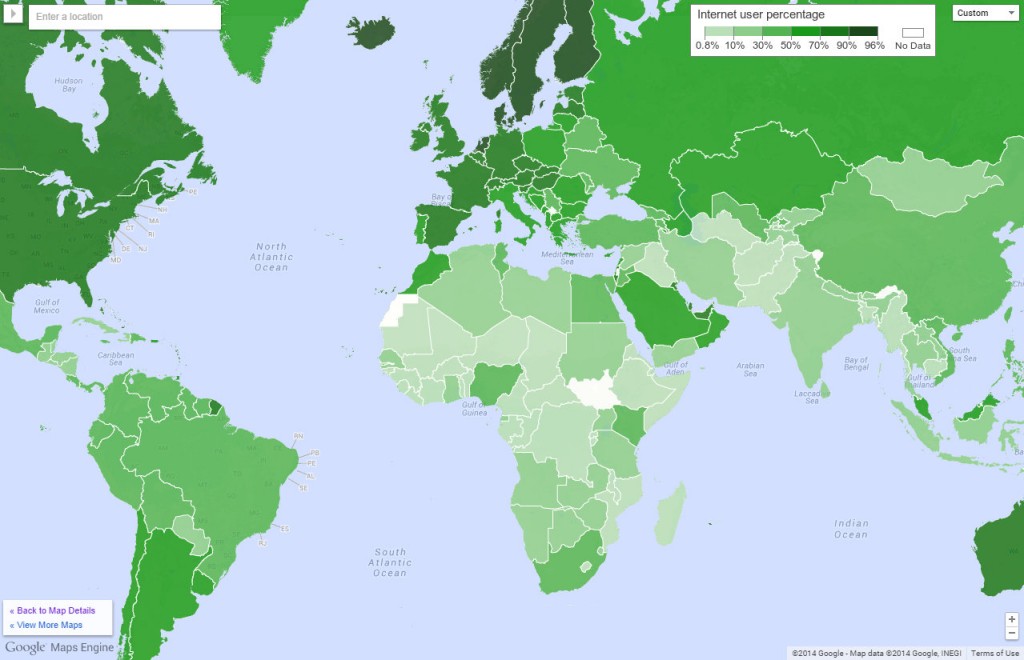
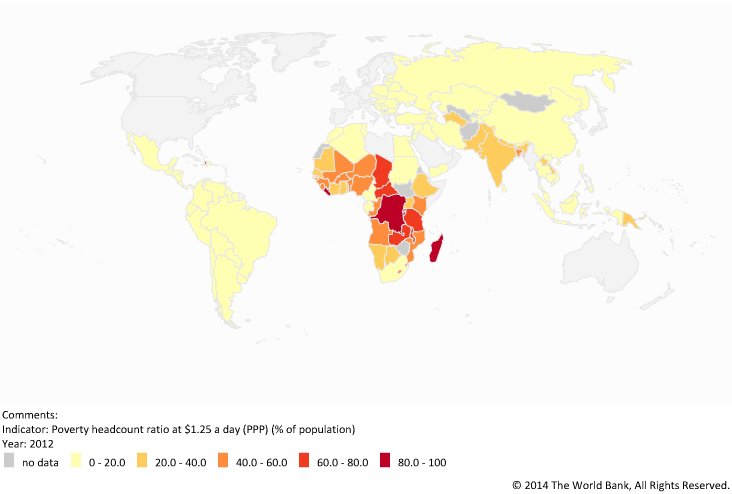
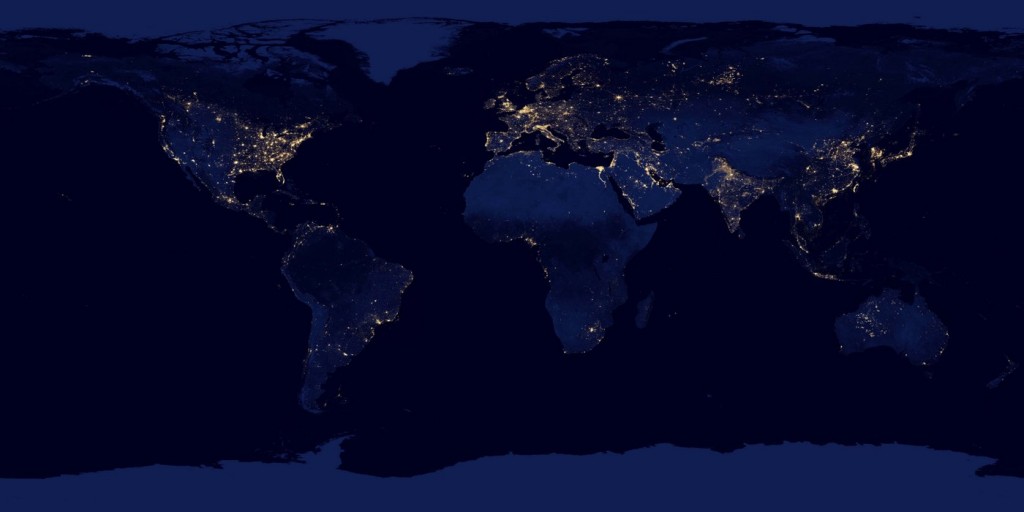
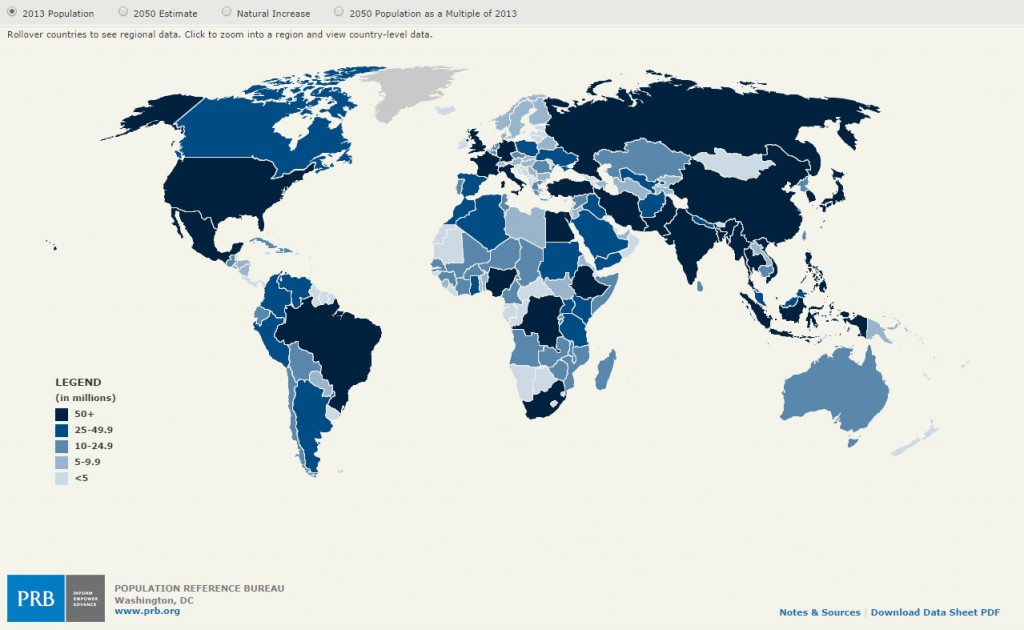
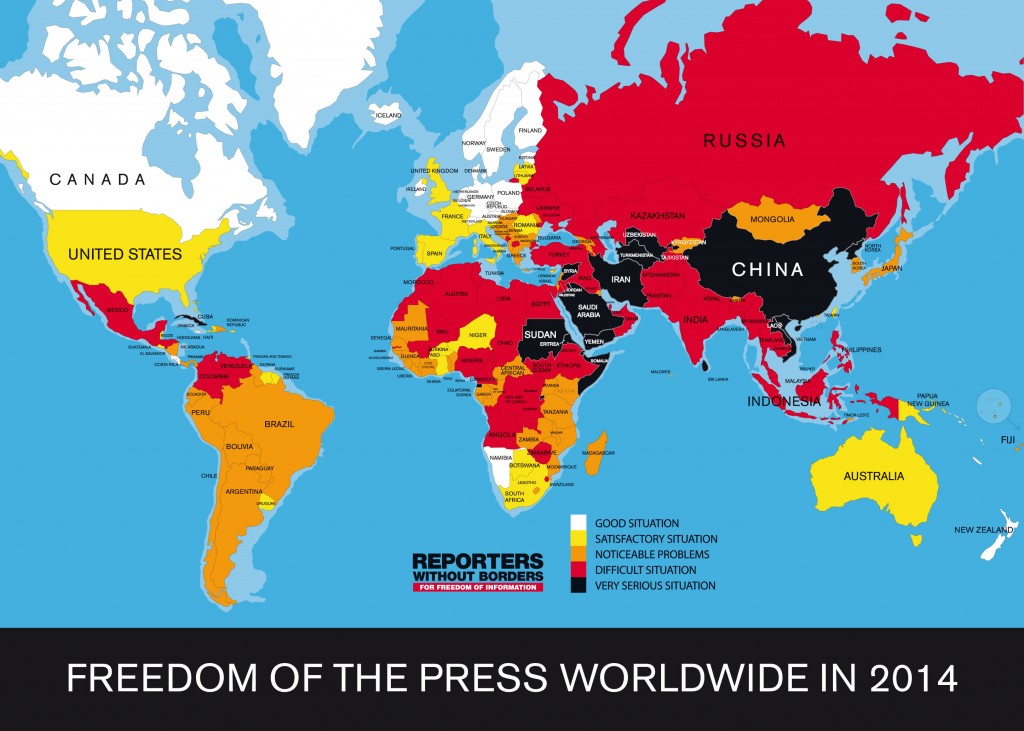
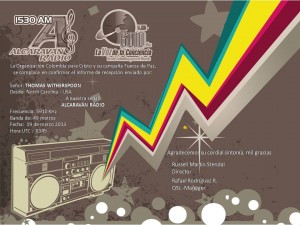
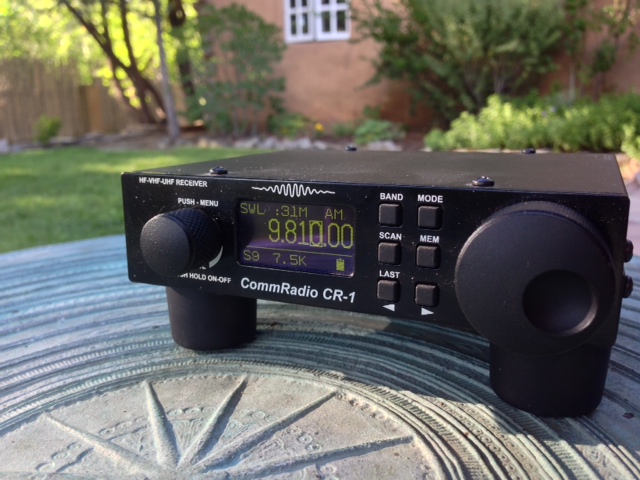
Shortwave listining has declined in the last 15 years but It is not the lack of broadcasters but noise generated by modern electronic devices which has now completely killed shortwave listening. Internet distribution, wifi routers, phone chargers, digital tv recorders, led lights, computers …………. the complete list is a long one.
I am 60 yrs old and long before the internet, as a child was captivated by radio, the discovery that on some bands you could pick up stations from around the world made it even more fascinating. I still listen to shortwave radio , there are still plenty of active radio amatuers but have to use internet web SDRs to do so.
I have a few shortwave radios which I can no longer use because of it. I have tried dipoles and loop antennas with some improvement but this is not a situation where newcomers will take it up. A large percentage of the UK population live in towns, you have to be well away from habitation before you can hear anything but noise on a portable shortwave radio.
As poorer countries become more affluent, the eletcronic noise will spread there, ensuring the death of shortwave listening.
I am 60 yrs old and long before the internet, as a child was captivated by radio, the discovery that on some bands you could pick up stations from around the world made it even more fascinating. I still listen to what is left on shortwave , there are still plenty of active radio amatuers but have to use an internet web SDR to do it!!!!
It is not the lack of broadcasters but modern electronic equipment causing so much interference which wipes out the shortwave bands. This is what has killed shortwave listening here in the U.K. not the lack of broadcasters. I have a few shortwave radios which I can no longer use because of it. I have tried dipoles and loop antennas with some improvement but this is not a situation where new comers will take it up. A large percentage of the population live in towns, you have to be well away from houses and roads (where internet distrubution cables radiate noise), most people have houses full of noisy electronic equipment.
As poorer countries become more affluent, the eletronic noise wil spread there ensuring the death of shortwave listening.
Sadly domestic AM broadcasting is nearing the end of its life in the UK you can not easily find am radios in shops only radios receiving DAB (digital audio broadcasting).
1. We have been reading that Radio Australia might come back in some form.
2. Radio Exterior de España DID come back, but as a North American, I don’t know whether that
broadcasts to Oceania.
3. I can get that listening options in Oceania might be a little more grim than in Europe or the US, if you were either place, I would list a dozen programs worth checking out (the two that I do admittedly skip in to your geography at rather inconvenient hours).
4. The two most important reasons why some of us will continue to respond to a “shortwave is dead” complaint are
a. Objectively, that is still untrue in much of the world
b. While I don’t suspect that this applies to you personally, there are those out there representing other interests who are trying to kill off shortwave, and this type of complaint only provides grist for their mills.
It would be more productive to write the governments you would like to see back than to ask us all to schedule a funeral…..
Came across this thread again in a google search hit. It’s been 2 years since I posted. In that time, as a listener in Australia the following has happened:
Radio Australia ceased transmission completely. Bye Bye Radio Australia.
VOA only now ever transmits to Africa from whatever was left in their transmission schedule to Asia Pacific. Bye Bye VOA
Voice of Greece stopped transmitting to Australia
and more…
On mY Kenwood R1000 and 25mtrs of long wire all I get to hear as a SW english service to Australia in hours that are viable for listening are Radio New Zealand, CRI, Radio Thailand, BBC, NHK and some others. The programming across all is old hat and stale. Private stations include religious stations which I have zero interest in Most of the other private non religious broadcasters have stopped airing. I used to listen to a private broadcaster a few years back in the evenings which i found relatively entertaining. They are now gone also.
Don’t know what its like in your part of the world but as an Australian listener its basically over. No doubt someone will come along and say something like you need to search harder or be up at some unlikely time like 3am to get some European broadcast or look for some esoteric outcome to re-find something that in decades past used to be abundant. But you’re wrong or you’re hanging desperately onto threads of what once was or both.
In a further 2 years, there will be less to look forward to than there is now.
It’s basically over.
Well, while there’s certainly less *from* here in Aus, or *aimed* here, I don’t think the situation is that grim. Granted, the religious broadcasters are more and more prominent, and if you’re thing is English language news & information then you might be disappointed – but if not, stations from Africa round through the Middle East & Eastern Europe to India are still regular catches here on the east coast of Australia in the early & middle evenings.
If you want to try your luck in the late afternoons, Pacific, US, & South American stations sometimes peek through, though your chances are better in the pre-dawn hours. On good nights, even some of the low power local & clandestine stations from all those areas, east and west of here, come through OK.
Frankly, I think the biggest problem for casual (or at least non-harcore) SWLing here, and probably everywhere in the Western world, has been the high and rising local noise floor on HF – particularly near-field noise. A 25m logwire won’t be doing you any favours with that; it’s about the worst and noisiest sort of receiving antenna you could possibly choose.
Gone are the days when you could just follow the advice of a handbook written in, or an elmer’s received wisdom dating from, the 30’s or 50’s, throw a bit of wire from the verandah to a tree at the end of the backyard, and expect to hear the world. Today, you need to box clever a bit, consider the problem, and choose something that’s appropriate to the prevailing RF conditions. Active antennas – though I’m not a big believer myself – seem to work fine for those who can get them far enough above the near-field noise; for the rest of us, like me, balanced antennas & small loops work better.
“Off Cabin Grid in Prince Edward Island”
Greetings from a log Cabin in Brackley Beach. Partially off gird
Just purchased the new CCrane Skywave, looking forward to getting it
I do miss my Radio Shack Patrolman SW60
I think that there will be an increasing demand for shortwave stations with the truth about news in every
area, especially news about politics and government . For the same reason as always.. censorship of the news. It is very easy to censor the internet. China is doing it . The big social media operations are censoring non-liberal content that they disapprove of( generally called hate speech) in the USA and Europe. The European governments are pressuring Google, Twitter, etc. to basically block any source that protests or even points out the Islamization of Europe.
In the USA we have AM radio with Rush Limbaugh , Laura Ingraham, Mark Levin, Hannity, Savage, etc..
They don’t have that in Europe. I believe that internet censorship will make Europe a target for shortwave transmissions, probably from privately owned transmitters. I think that commercial shortwave stations broadcasting the above conservative commentators to Europe would be well received.
SWLing POST
HAVE JUST READ MOST OF THE COMMENTS ON THESE PAGES AND I HAVE TO AGREE WITH THEM THAT MOST OF THE SHORT-WAVE TO ME IS FINISHED PRACTICALLY ALL OF THE MAIN RADIO STATIONS HAVE DISAPPEARED COMPARED TO WHAT I USED TO LISTEN TO 30/35 YEARS AGO
I HAVE JUST PURCHASED A ( TECSUN PL-880 RADIO ) AND EVEN WITH A 20MTR LONG-WIRE ANTENNA ATTACHED THERE IS VIRTUALLY NOTHING TO SPEAK ABOUT ON THE AIR-WAVES ,TOTAL LOSS
THEREFORE THE QUESTION ARISES ONCE AGAIN IS THERE ANY FUTURE ON THE SHORT-WAVES BROADCASTING MAKES YOU THINK DOES IT NOT ?
ALL THE BEST TO ALLTHE TEAMS OUT THERE REGARDS TO ALL JONAH WEST MIDLANDS UK 15 08 2017
John,
Speaking as someone who presents two music programs on shortwave and regularly listens to over a dozen others along with other programming, what is it exactly that you are looking for that leads you to state that the bands are a total loss? I note that you are in the UK. Now that you have invested in a radio, I would suggest that you also join the British DX Club – their publications, especially Alan Roe’s work, include an excellent road map for things worth listening to there. Even I belong, and I live in the US.
Yes, the 60s and 70s are gone. But there are still plenty of good reasons to listen from several countries, depending upon what it is that you are into.
The major broadcasters have fallen silent, yet Brother Stair is still booming out loud and clear. How that nutter has managed to outlast the government-backed stations of the worlds richest, most powerful countries is one of the many enduring mysteries of shortwave radio!
The internet and cell phones along with satellite communications offer educational, informational, and reliable communications that just were not practical with HF communication. That is why Hf and Ham communications are an aging legacy medium. What does Hf communication offer that these other mediums don’
t have? No charge for data! A hybrid combination of Hf, internet and cell phone communication can revive HF interest. Consider for example downloading a movie from HF to watch on a computer screen for no charge. Sweet, right! Or being patched to a satellite radio station to listen to free music all day long, seven days a week, 24hours a day, for free. The point is that HF communication is not obsolete, Its what it i used for that is obsolete.
Just announced that Australia is ending shortwave in January
Almost no one left to listen to now.
Another issue for many listeners is that modern technology creates so much noise that I can’t receive anything but noise these days
Great article. I was actually looking (Googled it!) to see if there was ANYTHING other than internet pages after pages, including MPEG & MP3’s. Looks like the whole thing is gone as you said it would in your article published in November 2014.
I DID however put this great article up on Facebook https://www.facebook.com/amazinghealthnow/ just below the cuff of my page.
73 all,
John VA3JO
Belleville, Ontario
I agree, shortwave is very useful for regions with poor coverage or no Internet. In the sixties and seventies, many people learnt English by radio. The BBC had an excellent depatment called English by Radio and many language professionals contributed to their programmes. Now the BBC continues podcasting English lessons, but only through the internet and only to listeners who can aford it. I think shortwave should be revived in order to play a vital role in education.
Some of us are doing different music and cultural programming, but it takes time and patience to build an audience. There are still plenty of interesting things to listen to out there, but you often have to search for them. Alan Roe recently published a very nice “Music on Shortwave” piece for the North American Short Wave Association, and it had quite a few entries. What remains of the shortwave press (including this site) is generally supportive of new efforts. I would suggest though that even if you don’t collect QSLs, if you encounter a program you like, you should take the time to write that program and tell them. There is no Arbitron or Nielsen for shortwave; correspondence is often the only way to prove whether anyone is listening.
As to the religious broadcasters, for better or worse, those programs are indirectly subsidizing those of us who are providing secular entertainment and cultural programming. If they disappear and no other money steps up, some stations might disappear. In the current economic reality I am glad they are there even if I’m not listening personally.
I have recently come back to SWL after 15 years hiatus. I have found that the content from the remaining broadcasters is really stale. I like international news, but the cover programs still feature the same music clips that were out dated decades ago. Lots of ‘old time’ swing era or feature programs and articles that have limited relevance to modern life or issues people deal with. What a snooze fest.
Radio Australia for instance still sounds the same as I remember it when I was a young man. It has barely progressed at all. Lots of religious broadcasters still around, Radio China dominates every band with half a megawatt of propaganda, same as decades ago. And people wonder why the bands are in decline.
These had a time and place when SWL was at its roaring peak, but if SW wants to survive it has to engage content to identify towards completely new generations instead of trying to hang on desperately to the old guys and gals.
Only quality and alternative programming and content will help. It also has to become a lot more contemporary and modern and in a hurry.
Good analysis. In my understanding as a citizen of Burundi, a labelled poor country, SW has died and we can help you bury it. The population relies on FM broadcasting. Most mobile phones allow my fellow citizens to listen to FM programming. The BBC, VOA, RFI, Radio Vatican have installed FM transmitters in my country. If DAB has not matured in developed countries, SW has died in the poorest small heart of Africa
HI,
In my childhood days most of the time I spent on listening Shortwave radio programs from Radio colon, VOA, BBC, DW etc stations. I learned English subject from these stations only. Now, I am working as a faculty of English in an engineering college of India.
I strongly recommend shortwave radio to all enthusiasts, rather than giving popularity of internet please encourage to the people, who are listening SW radio programs.
Hats off to SW radio people……………
Radio colon is still on (or in) the air, very low frequency though, and the output power depends much on the amount of cabbage or onions the last meal had. 🙂
Olha , as rádios de ondas curtas no Brasil tem seus dias contado por conta das contas de energia que são muito altas é isso que vejo ,mais eu sou Á favor que os senadores bem que poderiam ver isso com bons olhos
As ondas curtas-o que quer dizer, a parte de rádio de alta freqüência de espectro-nunca vai desaparecer, apesar de emissoras internacionais podem eventualmente desaparecer na história. Penso muitas vezes do espectro de ondas curtas como um recurso global que estará sempre aqui, mesmo que nós, humanos, não são. Mas em uma nota mais brilhante, espero que o espectro de ondas curtas será usado durante séculos por vir, à medida que implementamos diversas tecnologias que encontrar maneiras de fazer uso do meio.
Assim, no sentido mais lato, sim; Eu sinceramente acredito ondas curtas tem um futuro.
Does shortwave radio have a future? It sure as hell DOES!
Shortwave digital radio has enormous potential for use in wireless internet; specifically it allows for long range wi-fi and a competitive alternative to satellite communication. Satellite internet is expensive and has considerable lag time. It can also be disrupted by electrical storms making it unreliable in tropical areas or during the summer months. Shortwave radio signals can reach anywhere on Earth without overhead satellites and the decreased usage of it can mean more privacy for communications.
For me, lack of interesting content ie; alternative news, is what is lacking on SW these days. Radio Free America and Tom Valentine— Hour of the Time and Bill Cooper—For the People and Chuck Harder. My Drake and Sony have been in storage since these folks left the SW arena.
Very nice article, and I agree 100%. There is a future for shortwave listening, but it still feels like so much has been lost. I truly miss Radio Netherlands. Listening to their programs on a cold New England night was like have a group of old friends in the room.
You just do not get that from the internet.
Not to sound melodramatic or anything, but there may come a time when we may just wish we still had those powerful voices from Radio Netherlands, the BBC world service, and Radio Canada, readily available on a battery powered radio, instead of a computer that needs an internet connection. Just Saying..
Well, times change. Bang for the buck dictates all. Shortwave dries up while the Internet fills up. If you like religious dogma, government propaganda and boring documentaries, you’ll love the state of shortwave broadcasting today.
Will it ever change? Nope. All the money saved from shutting down the transmission sites and studios has already been spent on servers, coders and social media pontificators.
Heck, with the warming of relations between the USA and Cuba, I won’t even be able to hear the usual America-bashing that the Cubans loved to spew anymore.
Well, maybe I’ll just plant myself on one the dozens and dozens of frequencies that CRI has taken to them wax on about party loyalty and the things that China is doing to take over the planet.
Now where did I put that old Realistic DX-150.
Man made digital hash from the new “switch mode power supplies” (wall warts) , plasma TVs and all the other “unlicensed , unintentional radiators” are killing Shortwave- and AM broadcast band. For the sake of cheap filtering at penny’s per device, or better shielding , much of this can be reduced. But the FCC in the US and the even worse Industry Canada, do little to enforce the import,sale or complaints caused by these new devices.
The noise floor and spectrum-wide hash being spewed has been noticed by some AM BC stations who try to move to FM BC , rather than fighting for the benefits of AM BC band. Most readers here know what they are-same as what applies to SW. EvenVHF/UHF suffers from the harmonics.
Why are governments turning a blind eye to all the imported garbage that is distorting this priceless radio environment? Why do they allow manufactures to show filtering for import, then not include the parts on the assembly line for export? Why are specifications for RF noise generating Devices made more demanding?
Because they want to sell the spectrum to digital users or to force everyone to use “infrastructure dependent” services that we have to Pay to use and that can be cut-off by the government, content controlled and – most important- make use slaves to paying to communicate !
The shortwave spectrum does not cost users and Internet provides make money every time you listen to streaming broadcasts- I want my info directly from the scorce!
RFI is the covert way the shortwave spectrum will be render useless. Digital modes, while good, do not have some of the advantages of good old , AM mode – when heard in a noise free ENviroment.
Strangely, it seems even the broadcasters and THIER associations seem to do very little to force the regulators to protect us from all the spewing crap that is polluting the airwaves- all unnesserarly. Sad.
In Canada, the government no longer enforces noise complaints unless to emergency services, and trying to fix a neighbors noisy device gets you nowhere.
It’s sad, a waste but not unexpected as paid amd controlled methods of communication are the way of the future.
I agree 100% with GregtheHam. I have been an avid ham and SWLer almost my entire life ( started when I was 8…now I’m 49 ). RFI will be the ultimate demise of HF/shortwave, at least if you live near any area of population concentration, or even the suburbs ( like myself ). We lament the loss of shortwave stations, yes, but there will be nothing to listen to anyway except for the continuous din of grow light ballasts, cheap switching mode power supplies, plasma TVs, LED lamps, battery chargers, etc. The RFI in my neighborhood grows every year. It is astounding. It was pretty quiet when I first moved there, back in 1996 ( Westminster, CO, a suburb of Denver ). In the mid 2000s the noise floor started to noticeably creep up. It got worse every year. This year was finally the threshold point . Now I have to use multiple antennas and noise cancellation techniques, special loop antennas, etc that the average person would not have the wherewithal or desire/knowledge to do, in order to pursue my hobby of HF ham CW and SWL. Even with this it poses a significant challenge. Soon my QTH will be unusable for HF, and I’ll have to run strictly portable, or move.
There is NO enforcement, whatsoever, on Part15 emissions in the US. It is an absolute joke. The FCC could care less. Broadcasters don’t care. No one will do anything. Enjoy it while you still can. The RFI “genie” is out of the bottle. If you think I’m exaggerating, just wait a few more years, the “noise” will eventually reach you too unless you live out in the country. The HF spectrum is rapidly becoming useless in many areas. I don’t know what the answer is. Doesn’t matter if you switch to DRM, get better content, etc.
It is such a tragedy. The HF spectrum is a truly valuable resource, with unlimited potential to reach large audiences. It has been a rewarding and enjoyable past-time for me personally, I hate to see it go like this.
73 Mark AB0CW
Couldn’t agree more. LW, AM, and SW are becoming increasingly noisy because of uncontrolled RFI. Working the HF amateur bands is becoming more and more difficult, and I’m not even in an urban environment. You can only work ’em if you can hear ’em, and often I can only hear the S9+ stations above all the hash. Sad.
So true! I believe the Digitals are responsible for the abominable volume and characteristics (ie Square waves) are the cause of a lot of the noise, but hey! It’s the IN thing, unless FCC etc. tell them where they can put it, and not!
So you won’t see me doing much of that digi stuff, other than right here on the web. Other than that I’m still VA3JO and still do AM/FM and SSB 🙂
As a guy in hi forties I recall the heyday of shortwave radio back in the late 70’s, at that time the sheer magic of listening to far away stations (remember this was before ‘globalisation’) made you feel quite special.
My parents, relatives and friends all found me quite odd in that regard, and a frequency schedule from Radio Moscow sent to me didn’t help 😉
I’m afraid now that magic is lost and as I stated likely the internet and globalisation destroyed that magic but I’ll never forget those dark windy stormy nights on my SW transistor radio (Vega Selena?) listening to those far away wonderful and weird places.
Hi, I’ve updated my QRP website! I’m sure it’s of interest to fellow shortwave radio enthusiasts.
Here’s the link: http://www.stationqrp.com
73’s
Jack
After reading the article and comments, I’ve decided to forego buying a desktop SW receiver and will now put those $$ into a better laptop…….sorry…. new technology always pushes out the old
Hi Miami Joe. I respect your decision, but I am disagree with “new technology always pushes out the old”. Maybe that is true in your place/country. (Ask to a good pianist if he change his W.Hoffmann piano by a synthesizer or cutting-edge electric piano?)
You could bring your nice laptop to Southamerica and will see if you can listen radio on everywhere…..Do you understand? Please don’t confuse people with any comments without think and know all the situations…..people use his cellphones but ear radio a lot.
Here you won’t have neither Wifi nor Cellphone Data in a lot of places….and the same for vehicles….radio is very very cheap….it will never dissapear…
I’ve noted the decline of the major international broadcasters over the years. Thank you for capturing in detail the whys and wherefores.
I do have one question everyone needs to consider. If the governments throughout the world are capable of censoring what is news worthy, is a “free press” jeopardized? Are we resolved to accept one day that the sleeping giant became us. Will we find that the “bastion of freedom”, by the means of technology became apathetic to the plight of the rest of the world – which once looked to it for hope?
Great article. Radio for free! I maintain that shortwave is two or three days faster than the internet especially during the course of disasters. With over one billion working shortwave radios on the planet, let us embrace it. When local radio winks out due to lack of power, the blow torch of shortwave radio brings the outside inside. 73
The HF DRM broadcasting is capable to cover big countries like Poland, Spain, Germany, France or Romania with a single 5-20 kW transmitter and a NVIS antenna. Remarkable results can be expected from the car radios. All we need are receivers with the analogue AM/FM and digital DAB/DRM bands.
Hi Thomas! Very interesting post!! Very useful information!! What to say……I am a 30 years old man, and I love SW listening. I am a Hamradio too. I am agree with Broadwing that Hamradio has a system to reclute people, even young people. So, even when maybe there are less people in the hobby, there is a quantity that is maintaning the “crew”. Point-to-point communications are necessary, and what hamradio can offer is really useful, specially on catastrophe.
Talking about SW Broacasters, it would be great that they can transmit more than voice, I mean images and texts, but, with a simple system. All we know that DRM it’s great, but receiver producers are not working on that and we are still waiting for cheap receivers. I want to say that I like DRM and I would like that be massively implemented. Even for amateur experimenters is a complicated system….more specifically on audio compression….
As you said, there are many places without internet, and radio is the only system to get foreing news. In my case, as many, in case of decline all the shortwave stations, I guess I won’t hear any other source, I don’t like to put my computer nor even my cellphone to hear radio, so, is not the same. (I don’t like to have a transmitter at 2.5GHz next to my head).
HF spectrum is there and depends on us to do something with it. So…think McFly, think!!
I loved what VOA is doing with Radiogram. I will experiment.
I enjoyed this article in the TSM Thomas and agree with all your points. Corporate finance never does have a connection with the ‘product’ and unfortunately in the bean-counters minds, shortwave programs are just another ‘product’. It is rather like the demise of the local Post Offices in the UK. Every village used to have one, but now they are few and far between. What the corporate mind didn’t understand was, that apart from their useful function in delivering stamps, pensions etc, they were also a meeting place, where those on their own would meet others from the village and have some sort of social contact. Remove that, and you start to impinge on the social fabric of an area. The same can be said for shortwave reception, except the implications are much wider reaching in that people can be effectively disenfranchised if they are deprived of knowledge and information.
I do believe that now some of the ‘Big Guns’ have left, that the spectrum voids will be filled with more community based ‘local’ shortwave, similar to those already operating in S. America. Which in turn will actually make our hobby more interesting as digging out the lower power stations will just add to the fun.
Once gain Thomas, many thanks for a fine article
Regards, Charlie
If wishes made something come true I’d still be listening with a 13-year-old’s fascination to Radio Moscow, the BBC and HCJB. But to think those days will come back is fantasy.
The whole purpose of shortwave was to convey content with a broad appeal. Now the content has moved to the Internet. That’s the same deadly equation that print newspapers had to face. After all shortwave and newspapers existed as carriers of content, not as something that had value in itself.
I can’t conjure up a future that involves a return of valuable content to shortwave – stuff so important that ordinary people would feel compelled to buy a receiver.
So sure some other technologies may find a use for the bandwidth but I don’t need a funny looking hat and a crystal ball to understand that the decline of shortwave broadcasters will continue.
It doesn’t seem like something to puzzle over for more than a minute. I very much wish it wasn’t so. I also wish print newspapers had a future. But technology doesn’t seem to care about wishes. I’m sure people mourned the passing of the days when families gathered by the piano to sing. Recorded music came along and sheet music stores went away. Same deal when people stopped gathering by the fire to recite epic poems. The printing press came along and we wrote the stories down.
It’s the content, not the carrier, always has been.
New technologies push out old ones. So you gain something good and also lose something good. It’s always been so.
I wish the SW and the AM thrive. I have or I also harbor similar views on SW and AM. I just can’t understand how the new way of reaching out to people cheaper or cost effective than the simple Point A to Point B radio system.
You know that the internet uses radio waves, cables, submarine cables, satellites and what not to reach from Point A to Point Z? Baffles me.
Looks like some one wanted to make money using radio waves- to me!!!!
The Internet and the Mobile (The Cellular to be exact) were developed for entirely different aims. (ARPA (or DARPA?) wanted to ‘decentralise’ or de-concentrate communication and which evolved in to the Internet. Now there is a central switch to shut down the internet. It beats me!. The whole purpose of the internet was to spread out so that there would be no single communication path, but several.
Now we are paying for the ‘bandwidth’!!!!
A logical advancement for broadcasting should have been towards betterment of broadcast quality issues (Fading etc) . Will DRM achieve that?
Thanks for listening my sermon
Mahasenan
I agree totally, Markus. For AM to survive, broadcasters must realize that only broadcasting audio isn’t sufficient anymore. Consumers of radio (listeners, readers, viewers) expect to be able to listen to music, read the news, and even watch movies (currently low frame rate a la Diveemo).
Thomas, good article and well researched. Lets work to insure no more VOA transmitter facilities are dismantled. These facilities can broadcast to large areas of the world on each frequency on short notice. We all know the number of shortwave listeners peaks during any international event. (Former Transmitter Plant Supervisor, VOA Bethany Relay Station, http://www.voamuseum.org).
I don’t understand why we can’t have a form of amateur broadcast licenses. Like having a ham radio license, these would allow enthusiasts of the medium to run low to moderate power AM (ESSB?) stations that provide content based from various source – homegrown, creative commons material on the net, indie music (all with permissions of course) – there are plenty of creative people around. I suppose like VHF community radio. These might not be able to have commercial advertising (I imagine this would be the case), and most likely funded on a shoestring.
The model I’m thinking of is YouTube for radio, but without the copyright infringements – that would just be pirate radio. I do listen to pirates – some great programming – just imagine if they could build on that without fear of been shutdown – but then that’s the whole point for many pirates maybe 🙂
I clearly see a future.
However, the supplementary services are important.
Image and text transmission.
An approach makes @voaradiogram.
This is the future. I also still believe in DRM – Radio.
It’s a good article because it’s objective and honest while pro-sw.broadcasting at the same time. Yes, short wave stations have dissappeared. I clearly remember that in the ’80-s, ’90-s sw bands were so crowded, that it was imposible to listen only the chosen station. On the same frequency two or three stations were heard at the same time during evenings. The worst stituation was in winter time. Somebody could hear clear transmission and not too much interference whistle only on daytime. At least here in Europe this was the situation untill the early years of the last decade.
Today there are still stations during evening, even 20-40 stations/band on frequencies between 49-19 mbands. But 90% of them are transmissions to Asia or Africa. During daytime 49 mband is totally empty, also the 41 mband (except 2-3 stations). On 31 mband there are 3-4 stations and on 25 mband even 6-8, but that’s not like 20 years ago. This is the situation.
I have internet, mobile phone, Fm radio with a lot of Fm stations, but I never listen to them. Why? Because for me it’s not interesting. I cannot even listen to them – I don’t know why. I tried to listen VOA trough internet. It did not have the same kind of sounding than of the radio. But the same transmission with the same content was incredibly interesting on the radio. Why? I don’t know, but if there will be no SW broadcasting ever in the future I will have nothing to listen. The problem is that for average people radio listening on SW or LW is not interesting. For me to listen the BBC4 on LW from almost 2000 kms away is the one of the best things. I could hear it trough internet too, but’s that’s not the same…
There used to be listeners in the first world too, who are being squeezed out of HF, both SWLling and amateur radio, by the ever-increasing levels of man-made noise, especially from PLT and LED lamps. Over the last five years, noise around 3.5 MHz has gone up by 7 dB – that’s a factor of five – at this location in Lincolnshire, England.
Digital Radio Mondiale was supposed to be the cure-all, offering FM-broadcast-like quality on MF and HF, but the broadcasters are waiting for receivers to become available, while the receiver manufactueres are waiting for more than test transmissions to become available. Only when this cycle is broken can we resume that very 1960s pursuit of listening to some far-away station on the radio on the beach – a pastime which used to be almost a staple of films of that era to show what people did for fun on the beach.
With all this talk about the decline of shortwave radio, I can’t help but wonder who is buying all those shortwave radios that a company like Tecsun is making? They must have 20 or 30 different models and new ones coming out all the time. Someone is buying them, so a lot of people must be tuning in to shortwave. Don’t you think?
Just my 2 cents.
Chris
Excellent article, Thomas – a compelling argument for the retention of shortwave broadcasting, especially in developing countries. The inclusion of the maps really does clinch it. Shortwave will decrease even more in the developed countries as time goes on I guess, but that’s no reason to stop it for parts of the world where access to free information is really needed.
I think shortwave as we have it now is dead except for Ham Radio
unless someone comes up with a new way of transmission . Clear without so much static
The radios are fun to use but if it has too much static and noise it is not as much
fun
Jerry
Thanks Thomas, for the thoughts and opinions. You speak for so many of us. I just hope the broadcasters are listening!
I love radio and I love shortwave but I stopped listening a long time ago (now I mostly do DX-ing). Why did I stop listening?
It’s NOT because I have broadband at home and on my mobile phone. I don’t like listening to radio on my computer, it forces me to stay in front of it. I don’t want to listen on my iPhone either: it’s wasting the battery.
It’s NOT because of the old technology and the poor audio quality compared with online streaming. I listen daily to news on an FM station which has poor coverage in my area and sounds worse than a shortwave station with a decent signal. That’s okay, I don’t need HiFi when listening to news or background music.
The reason I stopped listening is because there really isn’t much worth listening to. I don’t care much about state-sponsored propaganda, religious broadcasts, or news from the other part of the globe. Those things won’t save shortwave. Shortwave can only be saved with quality content and stuff people are really interested in.
Tudor
I agree. I have recently come back to SWL after 15 years hiatus. I have found that the content from the remaining broadcasters is really stale. I like international news, but the cover programs still feature the same music clips that were out dated decades ago. Lots of ‘old time’ swing era or feature programs and articles that have limited relevance to modern life or issues people deal with.
Radio Australia for instance still sounds the same as I remember it when I was a young man. It has barely progressed at all. Lots of religious broadcasters still around, Radio China dominates every band with half a megawatt of propaganda, same as decades ago. And people wonder why the bands are in decline.
These had a time and place when SWL was at its roaring peak, but if SW wants to survive it has to engage completely new generations of listeners instead of trying to hang on desperately to the old guys and gals
Only quality programming will help. It also has to become a lot more contemporary and modern and in a hurry.
Thank you for a good analysis And Thoughtful suggestion.
A very good piece that hits a lot of things right on the head. I’m sick of being told that I have to use the internet to listen to radio now, I use my PC for many other things, plus my rural connection is very slow and constant buffering is a hell of a lot more annoying than any slight fading effects would ever be. I also think that the obsession with forcing people on to modes like ‘DAB’ have had a bad effect too, now many electrical shops will only sell DAB radios, and from browsing around in them you could easily get the impression that Long, Medium and Shortwave don’t exist anymore. I wonder how many people discovered Shortwave from buying an all band radio, or from seeing all those old half page newspaper adverts for Russian Vega receivers that received all kinds of exotic things? Maybe if the Tecsun radios were marketed the same way many new listeners could again be attracted to the bands. The fact is, radios are still by far the best thing to listen to radio programmes on, and the internet will never replicate the joy of just randomly tuning around and accidently discovering some gem of a programme or station for the first time. Making things easier doesn’t always mean making them better, and trying to bully us all into changing the way we listen by closing services will just not work.
It was a wonderful experience to read through this long but excellent, absorbing and educative article which covered every aspect that I can think of. What is there left for me to say or add? I quote ” It’s easy to become complacent and assume listeners have access to broadcasting content via the Internet, when decision-makers live in a word where information is not only plentiful and ubiquitous, but even bombards us to the point that we simply tune it out.”
Those decision makers who shut down VOA to all but Africa, Radio Nretherlands and many more did so just for one reason, because of the cost, and those who took that decision never listen to shortwave and do not know what they have taken away. It has been a chiken and egg situation. Take the VOA/IBB..when it reduced its programing, the number of frequencies, cut down on the power … the station became harder to find.And numbers start dropping. Fine broadcasters within start looking elsewhere as they know their future is not with the IBB with a management that doesn’t believe in what they do. If you don’t buy my argument, put a combined voice of the free world, hore some fine broadcasters, add the transmitters and secure a good signal for a year and see what will happen.
Shortwave never died, is not dying but is being killed.
Very nice article with great insight into SW Radio. For my part as a DXer I would like to see more recruitment activity by clubs. Ham Radio has a great system for getting people involved to inlude having a mentor help you out in the beginning. The DX hobby does not do this so how can we expect the hobby to flourish? Hopefully new stations will pop up like Global 24. Let’s support them. Instead of espousing gloom and doom about shortwave, support what we have and recruit new listeners into listening, and the hobby.